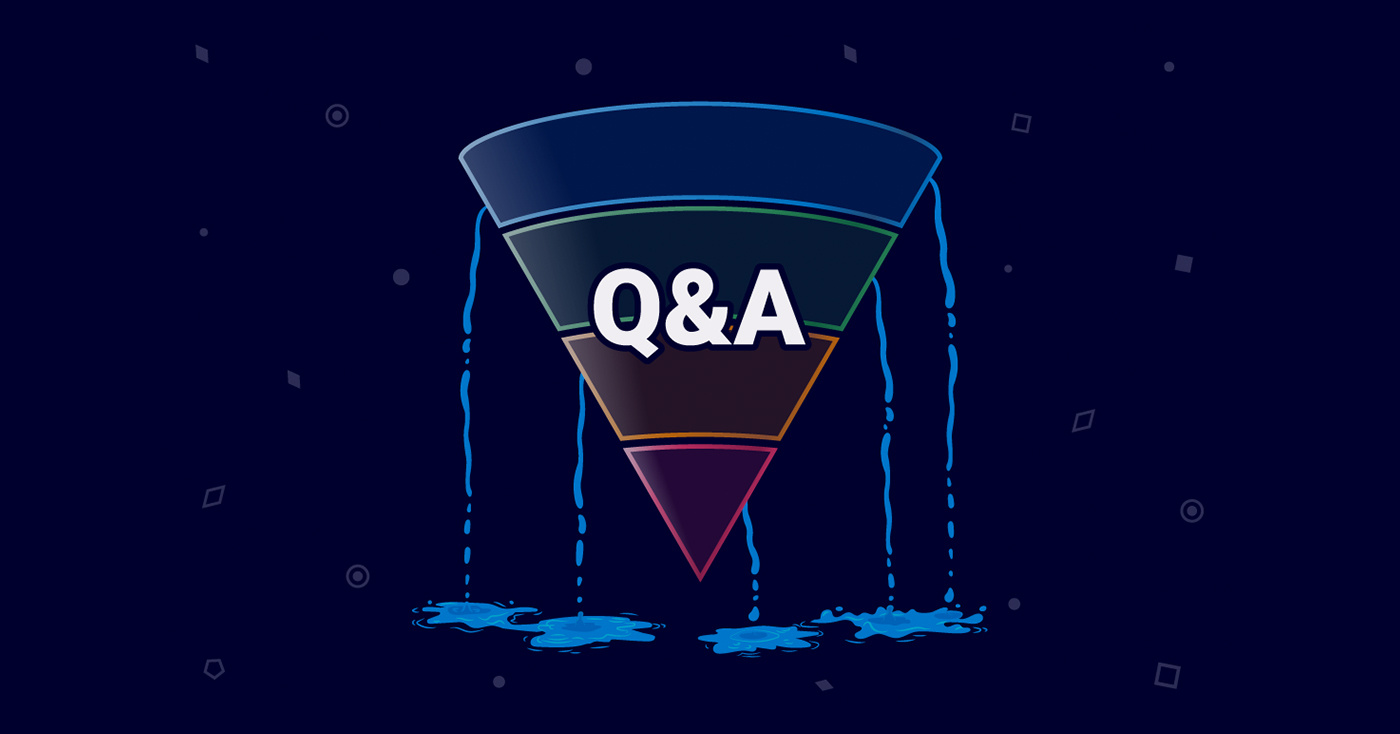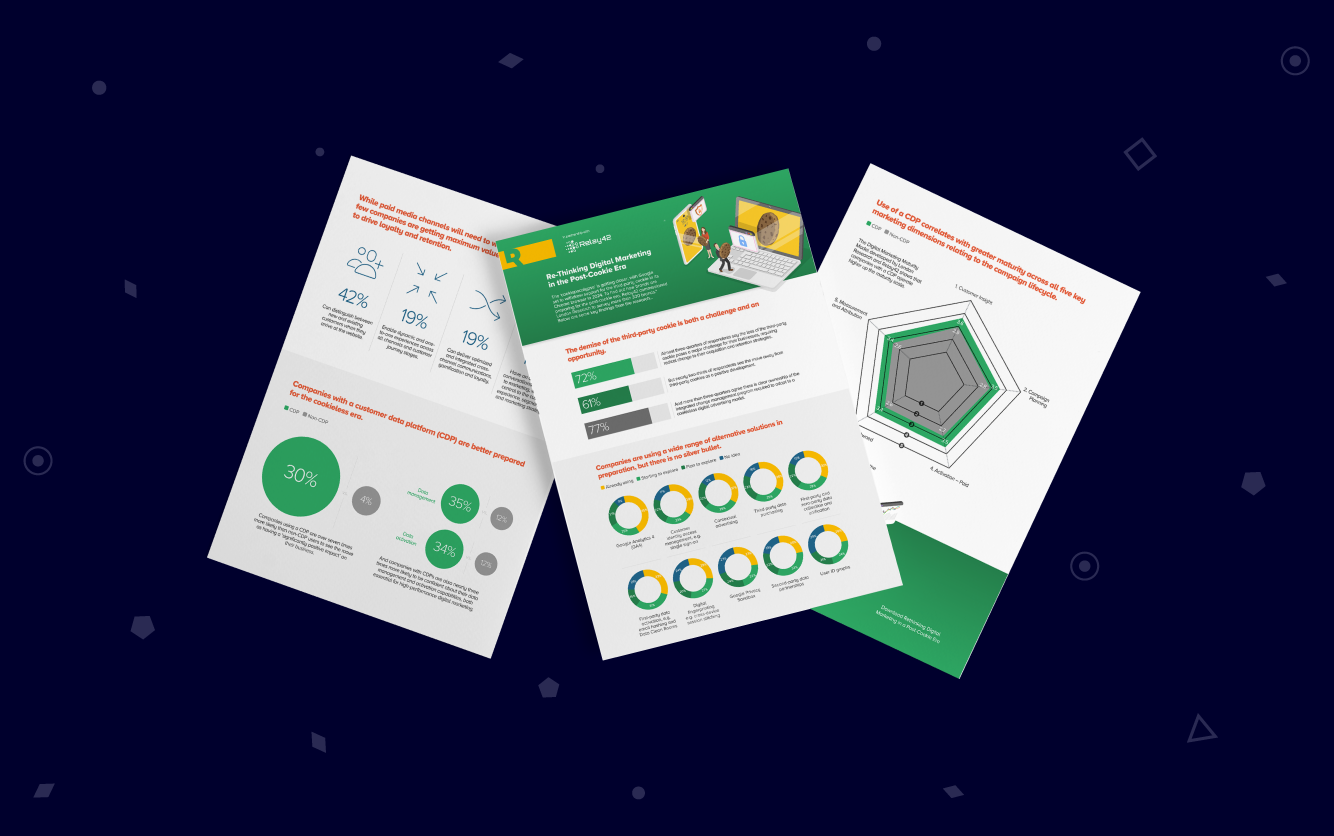Third-Party Cookies Webinar Q&A
by Kalina Dancheva on 28.12.2023

During our recent webinar addressing how marketers can adapt their marketing funnel to a cookieless world, our hosts—Tomas Salfischberger, Founder and CEO of Relay42, and Richard Jonkhof, Head of Customer Success and Strategy—responded to questions submitted in the weeks leading up to the webinar, as well as live during the session.
In this article, you can delve into the Q&A session to gain insights on how marketers can navigate the challenges of a cookieless landscape, providing valuable knowledge on strategies and solutions for the evolving digital marketing environment.
Q: Would it be possible for marketers to create a lookalike audience based on website visitors, visitors of a specific page, or a section of the website in a cookieless world?
Yes and no. Some platforms will still allow the creation of lookalike audiences, based on identifiers instead of third-party cookies. Although the Google ecosystem has limited built-in lookalike capabilities, Meta and other platforms are more active. In the evolving landscape, the CDP space will be important for ID matching between platforms.
Traditionally, third-party cookies were widespread, but platforms are now creating their own first-party identifiers. Meta does this through user logins, and Google through "first-party sets", which bring together multiple websites, streamlining identifier management within their ecosystem. This will likely take the form of YouTube, Double-click, and Google Search being a single first-party set, meaning they can manage identifiers in such a target ecosystem and they’d all be first-party identifiers.
So marketers need to think about identity-matching within those systems. Instead of having a third-party cookie for everything, try to build connectors and data-matching sets between all the target media platforms. Email addresses and first-party cookies are an easy way to do this.
The CDP can capture the first-party identifiers from Facebook or Google, and then build a match table around that. This will be channel specific, and have privacy controls and first-party interaction built in. For example, Meta can match with users who already have an account and have given permission to create the IDs. The end result is a clearer, more transparent way to reach users, with less performance loss.
Q: Will Google Solutions, such as Google Topics, be available on Meta to support awareness campaigns on Facebook and Instagram?
It’s unlikely that Meta will join any of the Google Chrome Solutions because it doesn’t have a recognition problem, as it logs in users to its own platform. So the only challenge for Meta is matching first-party data and advertiser behavioral data with their dataset. They’ve already released quite a lot of solutions for that, such as Conversion API (CAPI) and other different APIs that are being plugged into the CDPs.
Meta is pushing hard for those server-side solutions and asks you to share more first-party information from your customers, whether that’s email addresses or first-party identifiers, hashed IP addresses, or anything else you can share with Meta via the Conversion API.
Q: What do you see customers doing to prepare for a cookieless world?
Customers tend to turn first to Google, which makes sense considering that Google is the one pulling the plug on third-party cookies. However, Google has explicitly said that they are not offering a solution due to regulatory restrictions meaning Google can’t be both buyer and seller. Therefore, Google advises advertisers to turn to ad tech vendors to help them navigate the situation.
Q: Are server-side cookies the solution?
Server-side cookies will be hugely important, yes. Meta, Google, and other big platforms will be creating their own ID for logged-in users or server-side cookies, so if you do the same and use your CDP to drive server-side cookies on your platform, you can build a matching set between two first-party identifiers, which reduces the negative. You’ll still have a way to reach your customers, albeit on a per-platform basis. You’ll need to set up the match shares and configure the CDP to pick those channels – unlike the more cookie-based method where you can use one cookie for everything.
Remember that the server-side cookie also helps with customer recognition. If you talk about further steps in the funnel, such as personalization on your website for anonymous visitors, it makes perfect sense to start using a server-set cookie as it will allow you to recognize a user over a longer period.
Q: What will happen with DV 360 and Google Ads, and do you expect them to offer an alternative to allow advertisers to continue their remarketing programs?
That depends greatly on the outcomes of the current antitrust discussions. It was expected 12 months ago that Google would be joining the Protected Audience API from both sides. However, it has become clear that they won’t and cannot be on both sides because it makes the antitrust risk for them a lot higher.
So it’s likely that the rest of the ad tech industry will have to plug into Protected Audience API. This is happening quickly now with many customers already starting to use Protected Audience API.
Q: Which types of businesses will be most affected by the loss of third-party cookies?
It’s less about industry and more about the marketing strategy. Start by investigating what your marketing team is currently doing. Where are you spending most of your budget? What technologies are you currently relying on?
If your strategy is heavenly relying on third-party data, such as using programmatic advertising channels or spending a big part of the budget on the top of the funnel based on interest groups that come from third-party data, then that will be a big problem. If your reliance on traffic from retargeting is low, then the impact on your overall marketing performance will be lower as well. If you already focus on first-party data activation then the changes will have less impact.
So it really depends on the marketing strategy of each advertiser, which should be investigated on a case-by-case basis by the marketing team or with the help of a partner.
Q: Should we prepare for an increase in customer acquisition costs?
Probably. There will be a loss of performance if you don’t act now. If you take mitigating actions, such as implementing Topics API, starting to use Protected Audience API, adding server-side cookies, creating the match tables, and setting up a good data strategy, you could be back to normal. And if you haven't done channel personalization yet, then you'll be even better than before.
If you're quite far in these preparations, then it's about mitigating performance loss. So far, it looks like the performance will be at similar levels, though it's still early days to know for sure.
Another piece of advice on this is to align internally. What you see often is that organizations operate in silos where paid and own marketing channels work separately from each other. See where you can work together with other teams to get more out of your owned channels and increase the performance of your marketing funnel as a whole. This way, you can ensure that fewer people drop off mid-funnel, rather than focusing on putting more people on the top of the funnel.
Q: How will using email addresses as a unique identifier for first-party data fit with GDPR when creating lookalike audiences?
That's the next step you need to take. If you want to use CRM data, email addresses, or loyalty programs for lookalike audiences, interaction, or personalization, you’ll need permission from the user in terms of GDPR.
If you have a lot of personal data, then you need to focus on obtaining user permission and how to do that. If your permissions are too broad, it is advisable to involve your compliance team and get their advice on how to formulate the wording correctly.
That's one of the reasons we believe in the customer journey approach, as it is much better to ask consumers for permission on clear steps in the journeys, rather than asking them to
Q: With browsers sunsetting third-party cookies soon, and our CDP still awaiting details on Google's privacy sandbox API, is there a problem if we're not already connecting to these APIs?
Yes. If you're thinking about connecting with the APIs then you're more than a year behind as they’re already enabled in the browsers and have been running for over a year. The moment to run trials is right now, as Protected Audience API is enabled in the browser.
At the moment, you can do both, third-party cookies and Privacy Sandbox API, and from January 2024, for 1% of the Chrome users there will be only Protected Audience API, – and it will ramp up from there.
Remember that the Privacy Sandbox is live today and you should be using it. Start experimenting now. Marketers and performance marketers can compare results, learn how the technology works, and run experiments on a small scale.
Seeking strategic guidance on adapting your marketing for a cookieless world?
Reach out for a private consultation with one of our experts in cookieless marketing.
You May Also Like
These Related Stories

Demystifying Post-Cookie Digital Marketing: FAQs and Expert Answers

Getting Ready for the Next Level of Customer Journeys with Relay42 Automated ML (1/2)


.png?width=786&height=265&name=Relay42%20Demo%20Banner%20(1).png)